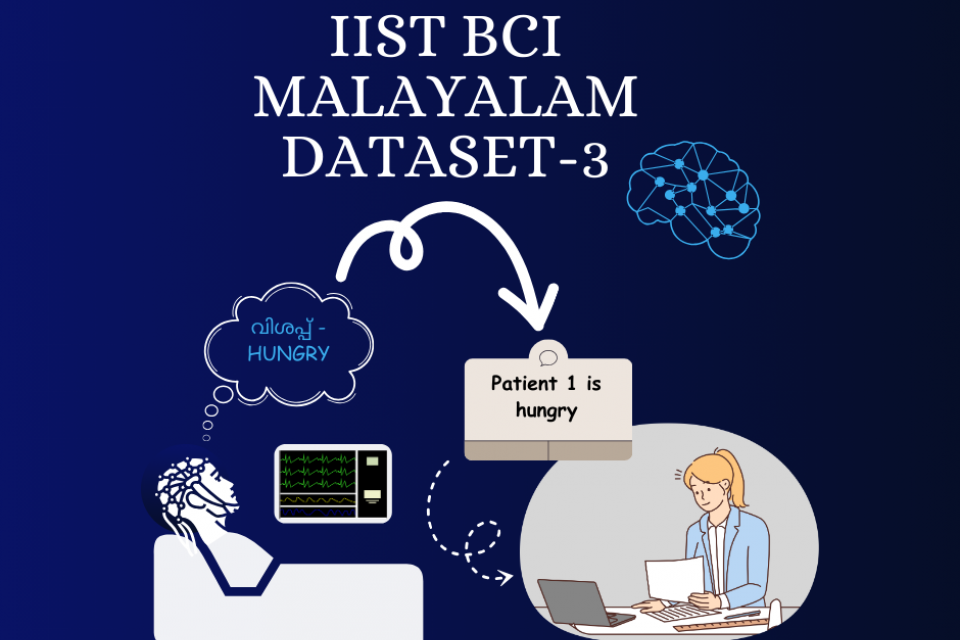Datasets
Standard Dataset
IIST BCI Dataset-3 for 100 Malayalam Words
- Citation Author(s):
- Submitted by:
- PARVATHY S
- Last updated:
- Thu, 05/09/2024 - 05:07
- DOI:
- 10.21227/wa4h-cr10
- Data Format:
- License:
 2858 Views
2858 Views- Categories:
- Keywords:
Abstract
This paper introduces a dataset capturing brain signals generated by the recognition of 100 Malayalam words, accompanied by their English translations. The dataset encompasses recordings acquired from both vocal and sub-vocal modalities for the Malayalam vocabulary. For the English equivalents, solely vocal signals were collected. This dataset is created to help Malayalam speaking patients with neuro-degenerative diseases. This dataset not only contributes to the advancement of braincomputer interface technology but also holds promise in fostering effective communication solutions for individuals with restricted verbal abilities.
The raw dataset comprises text documents, with EEG samples stored as files containing values separated by commas and arranged in rows and columns. Each row represents a specific sample.
The first column denoting the sample index.
Columns 2 to 9 containing EEG recordings from eight selected channels.
Columns ranging from 10 to 22 and 24, may hold supplementary or unimportant data.
The 23rd column typically represents time in a raw, unprocessed format.
25th column displays timestamps in the format "YearMonth-Day Hour:Minute:Second". These timestamps provide precise temporal information for each sample, aiding in synchronization with external events or measurements.
Alongside EEG data, the text documents may contain metadata or supplementary information relevant to the recordings. This structured format facilitates efficient processing and analysis of EEG data for various research or clinical applications.
Dataset Files
- IIST BCI dataset 3 for 100 Malayalam Words.zip (115.66 MB)






